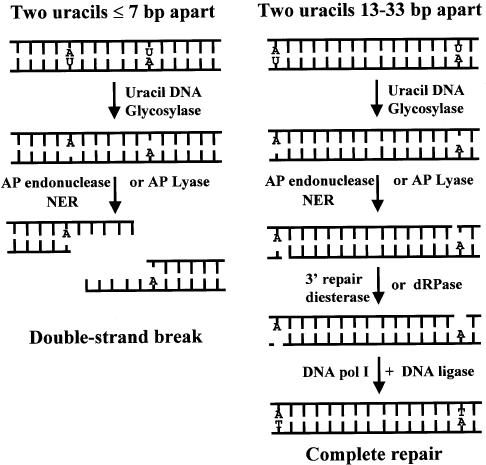Figure 5.
Closely opposed uracils (≤7 bp apart) are converted to a double-strand break in bacteria. When two uracils (U) are in opposing DNA strands and situated either 5′ or 3′ to each other, uracil DNA glycosylase can remove both uracil residues, resulting in a MDS consisting of two closely opposed AP sites. The major AP endonucleases (exonuclease III or endonuclease IV), the AP lyase activities or the NER pathway in the bacterium can then convert the AP sites to SSB-repair intermediates. The repair products shown are those generated by the AP endonucleases and AP lyases of the base excision repair pathway. If the two uracil residues were originally situated ≤7 bp apart, the two SSB-repair intermediates form a DSB. A DSB is not formed if the uracil lesions were originally separated by 13–33 bp. In the absence of uracil DNA glycosylase, repair is not initiated to generate the SSB-repair intermediates and hence a DSB is not formed.

